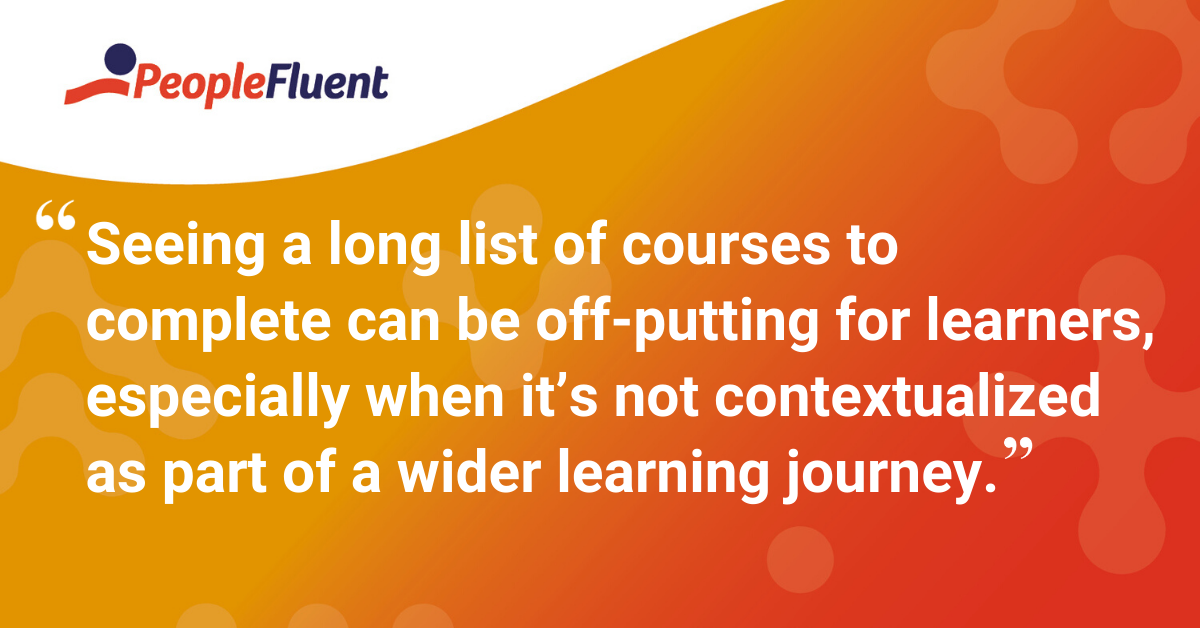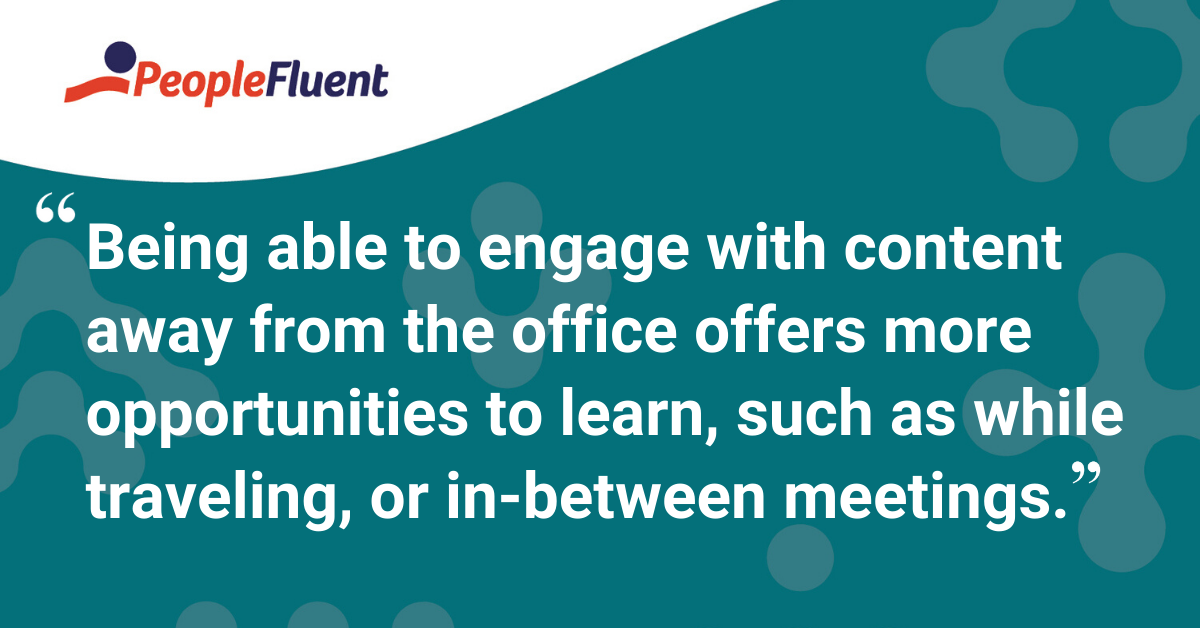Published: May 24, 2019Time to read: 6mins Category: Learning
4 Ways Learning Technologies Can Boost Learner Engagement
In this blog post from Nancy Dietz, Senior Education Consultant, we explore four ways you can use learning technologies to drive learner engagement.
High learner engagement is the major goal for many L&D professionals, with one recent survey reporting that nine out of 10 businesses want to increase employee engagement with learning.
Engaged, motivated learners are far more likely to get the most out of their learning programs and take their newly acquired skills and knowledge back into the workplace. For learning to achieve positive, measurable results on business performance it needs to be engaging and easily accessible. There are two angles to boosting learner engagement:
1. Create high-quality, engaging learning content and courses.
2. Use strategies for the delivery of that content that maximizes accessibility and engagement. Your learning technologies and tools are vital for meeting the delivery angle of your engagement goals. In the rest of this blog post, we’ll explore how learning technologies, particularly your Learning Management System (LMS), can be harnessed to drive learner engagement.
Use Learning Technologies to Deliver Clear Learning Journeys

Many learners struggle to engage with learning because they don’t understand how it fits into their wider personal development journey—they may not be able to easily understand where the learning will take them and how it relates to their job role.
Seeing a long list of courses to complete can be off-putting for learners, especially when it’s not contextualized as part of a wider learning journey.
Use the features in your LMS to visualize and contextualize that journey to drive engagement and make it easy for your learners to see what’s coming up next.
A visual learning journey could be set up to communicate:
- The courses a learner needs to complete as related to core competencies of their job role.
- An onboarding program that sets out the courses a learner will complete on a weekly basis—this gives them a clear view of the journey they’ll undertake to successfully integrate into your organization.
You may also be able to specify the format and type of learning available, to demonstrate the flexibility your learners have in choosing a way to learn that most suits them.
Recommended related reading: 'The 13 Must-Have Features of a Learning Management'
Support Self-Directed Learning With Content Curation Platforms
While more formal learning courses will always have their place, particularly when it comes to compliance training, offering less formal and flexible ways to learn can be a powerful engagement driver and will boost your employees’ personal development.
Today’s learners, particularly those who are more recent entrants to the workforce, want the ability to learn at their own pace, and to pick and choose how and when they’d like to learn.
There are now many learning platforms (often known as Learning Experience Platforms, or LXPs) that give you the opportunity to curate different kinds of learning content, as well as enabling your staff to contribute their own content to share with others. These platforms offer a ‘YouTube-style’ way of consuming learning content as well as giving learners the chance to interact with content by enabling discussion.
Use Apps, Tools, and Features to Increase Accessibility

It might sound simple, but one key barrier to engagement is a lack of accessibility. Regardless of the quality of your learning content, if learners can’t access it easily or it’s not in a format that best suits the way they learn, then they’re unlikely to engage with it.
Something as simple as implementing Single Sign-On (SSO) technology can avoid frustrations your learners may encounter when accessing your learning platforms (forgotten passwords, for example) and provides a seamless learning experience across the different learning technologies they may interact with to complete their training.
With time pressures and hectic working schedules now the norm for many employees, giving learners the ability to learn at a time and place that suits them is now an invaluable strategy for increasing engagement with your learning. Being able to engage with content away from the office offers more opportunities to learn, such as while traveling or in-between meetings.
Look for ways to deliver mobile learning. This could be using your LMS’s mobile app to give learners easy access to courses on the go. And ensure any courses you make available on phones or tablets have been optimized for these types of devices.
Finally, for global organizations, another key way to drive engagement is to provide learning in native languages, rather than asking your people to complete learning in what may be a second language. Some LMSes have the functionality to set preferred languages and deliver learning with translated content.
Not only does this make learning easier, it also demonstrates that you’re catering to your learners’ preferences and that, as an organization, you embrace diversity.
Borrow Tactics from Marketing to Promote Your Learning

LinkedIn’s 2019 Workplace Learning report noted that many L&D professionals are using email marketing to help promote their learning—and a correspondingly high number of learners are also accessing learning via email communications.
You can use email reminder features in your LMS to drive engagement with your learners, not just as a way to chase completion of assigned courses. Email communications are a great tool to maintain engagement and encourage learners to build a long-term learning habit.
So instead of sending formulaic ‘you must complete X learning’ type emails, take a more creative, dynamic approach. Firstly, ensure you include links to any courses, but also think about delivering supplementary resources that encourage learners to further the learning journey, such as articles or videos.
Make your language action-orientated and direct. Take a look at any number of email marketing communications you receive from your favorite companies and you’ll likely see they use a number of best-practice tactics to prompt you to take action.
Get More Learner Engagement Tips by Watching Our Webinar
Our recent webinar, ‘Making Learning More Accessible to Boost L&D Performance Results’ showcases a range of practical ways you can harness PeopleFluent Learning to drive learner engagement.
Discover How Learning Builds Skills and Ensures Compliance
Design, deploy, track, analyze, and report on enterprise learning and compliance programs. PeopleFluent helps you execute your programs seamlessly, so employees upgrade their skills and you get results.